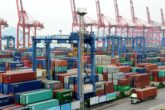September 26, 2018
The Second Coming of Kim Jong Un
The leaders of the United States and North Korea waited seventy years to have a first face-to-face encounter. That happened on June 12, when Chairman Kim Jong-un met President Donald Trump in Singapore. Now the pair is preparing for an encore encounter, which will mark the second summit in about four months.
The first coming of Kim brought the United States full circle from last year’s “maximum pressure” and “fire and fury;” the second coming of Chairman Kim is apt to go further, solidifying an end-of-war declaration as a quid pro quo for the beginning of verifiable denuclearization steps. Peace and denuclearization are the two tracks of North Korean diplomacy that must run in tandem, each depending on the other to maintain momentum, and both tracks exposing the U.S.-South Korean alliance—and North Korea—to new risks and vulnerabilities.
While appreciating Kim’s savvy diplomacy this past year, South Korean president Moon Jae-in is the essential choreographer of this diplomatic dance.
On Monday afternoon at the United Nations in New York, Moon briefed Trump on what specific steps Kim said he is willing to take toward dismantling nuclear and missile programs. He went beyond the public disclosure of possibly permanently closing the Yongbyon nuclear facility, something often negotiated in the past and which most analysts believe is no longer the only or main facility for producing weapons-grade nuclear fuel.
Moon also apprised Trump on what “corresponding measures” Kim expects in return for expediting denuclearization. Although the world knew that skeletal outline of a plan after Moon’s visit to Pyongyang last week, the South Korean president held onto the detailed information until he could brief Trump himself in the hope of persuading the U.S. president to return to the summit with Kim and embrace the politically controversial move of an end-of-war declaration as the minimum price for commencing denuclearization.
Read the full article at The National Interest
More from CNAS
-
Ziemba: Struck By Energy Deal Between India & Saudi Arabia
Saudi Arabia and India have agreed to deepen energy ties and cooperate more closely on tourism and technology as the countries seek to strengthen relations at a time of turbul...
By Rachel Ziemba
-
Trump’s Crackdown on Foreign Students Is a Gift to China
When top global talent no longer sees America as a stable, long-term bet — in light of both visa and research funding insecurity — many will vote with their feet....
By Jordan Schneider
-
Trump Administration Realises That The Tariff Strategy Has Backfired: Lisa Curtis
Trump administration realises that the tariff strategy has backfired, says Lisa Curtis, senior fellow and program director at the Center for a New American Security.Watch the ...
By Lisa Curtis
-
Ep 187: Richard Fontaine on the “Reverse Kissinger”
Richard Fontaine, CEO of the Center for a New American Security (CNAS) and co-author of No Limits? The China-Russia Relationship and U.S. Foreign Policy, joins the show to dis...
By Richard Fontaine




